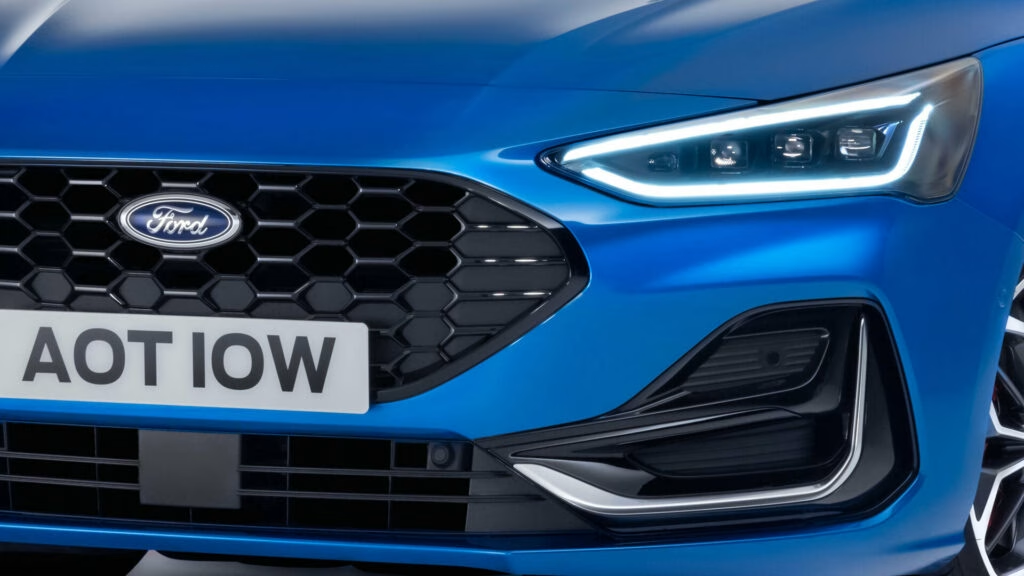Why Is Ford Planning a New Focus-Sized Crossover for 2027?
If you’ve been keeping an eye on the car market, you’ve probably noticed a seismic shift. Sedans and hatchbacks—once the bread and butter of city streets—are taking a back seat as crossovers and SUVs surge ahead. Ford, like many automakers, is reading the room. With the Focus bowing out and consumer tastes evolving, Ford is reportedly gearing up to launch a new Focus-sized crossover in 2027. But what’s really driving this move?
The answer is simple: demand. According to the European Automobile Manufacturers’ Association, SUVs and crossovers now account for more than 50% of new car sales in Europe—a figure that’s only expected to rise. Ford’s decision to fill the Focus-sized gap with a crossover isn’t just about keeping up; it’s about staying relevant in a market that’s rewriting the rules.
What Powertrains Will the New Ford Crossover Offer?
Let’s face it: electrification is no longer a futuristic buzzword. It’s the new normal. Ford’s upcoming crossover is expected to come with both hybrid and fully electric powertrains, giving buyers flexibility at a time when environmental regulations are tightening and fuel prices remain unpredictable.
This isn’t Ford’s first rodeo with electrified vehicles, either. The brand has already rolled out hybrid and electric versions of models like the Kuga and Explorer in Europe. By offering multiple powertrains, Ford is hedging its bets—appealing to eco-conscious drivers while still catering to those who aren’t quite ready to make the full leap to electric.
How Will This Model Fit Alongside the Ford Kuga?
Here’s where things get interesting. The new Focus-sized crossover won’t replace the Kuga (known as the Escape in the US, which is being discontinued stateside). Instead, it’s expected to be built alongside the Kuga in Spain and share key components, likely to keep costs down and streamline production.
Think of it as a sibling rivalry, but with a twist. The two models will target slightly different buyers: the Kuga remains a mainstay for families who want a bit more space, while the new crossover is aimed at those looking for something more compact but still practical. Sharing parts also means Ford can offer competitive pricing without sacrificing quality—a strategy that’s worked wonders for brands like Volkswagen and Hyundai.
Will the New Crossover Be Affordable?
Affordability is top of mind for most buyers, especially as the cost of living continues to climb. Ford seems to be positioning this new model right in the sweet spot. With the Puma Gen-E starting at around £26,245 ($33,600) and the Explorer EV at £39,285 ($50,300), there’s a noticeable gap in Ford’s lineup. Slotting the new crossover at around £32,765 ($42,000) would make it an attractive option for those who want more than the Puma but aren’t ready to shell out for the Explorer.
This pricing strategy isn’t just guesswork. Recent data from JATO Dynamics shows that the compact crossover segment is fiercely competitive, with rivals like the Hyundai Tucson, Kia Sportage, and Volkswagen Tiguan all vying for attention in the £30,000–£40,000 range. Ford’s move to undercut or match these prices could be a game-changer.
What Platform Will Underpin the New Model?
While Ford hasn’t confirmed all the details, industry insiders suggest the new crossover could ride on the C2 platform—the same architecture that underpins the outgoing Focus, Bronco Sport, and Maverick. It’s a tried-and-true platform, praised for its balance of ride comfort, handling, and adaptability to different powertrains.
Of course, using an established platform isn’t just about saving money. It’s about reliability. The C2 has already proven itself in various markets, and its flexibility means Ford can quickly adapt to shifting consumer preferences or regulatory changes. That’s a big deal in an industry where agility often trumps tradition.
Will the New Crossover Come to the United States?
Here’s the catch: don’t hold your breath if you’re in North America. Ford’s strategy for this model is laser-focused on Europe, where compact crossovers are in high demand and emissions standards are particularly strict. The US market, on the other hand, is seeing the Escape (the Kuga’s American cousin) phased out, and there’s little indication that this new model will cross the Atlantic.
That said, never say never. If the new crossover proves to be a hit in Europe, Ford could always reconsider. After all, automakers have a long history of adapting their global strategies based on what sells.
How Will Ford Differentiate This Crossover from the Competition?
Design and driving dynamics. Those are the two pillars Ford is reportedly emphasizing with this new model. In a sea of lookalike crossovers, standing out is half the battle. Ford’s recent models have leaned into bolder styling and more engaging driving experiences, and early reports suggest the new crossover will follow suit.
This isn’t just marketing fluff. According to a 2023 survey by AutoTrader, nearly 60% of compact SUV buyers cited design as a key factor in their purchase decision, with driving feel close behind. Ford’s focus here could pay off, especially if they manage to inject some of the Focus’s famed agility into a higher-riding package.
What Does This Mean for the Future of Ford in Europe?
Ford’s European lineup has been in flux, with iconic nameplates like the Focus fading away. But this new crossover signals a renewed commitment to the region. By investing in a model tailored to European tastes—compact, electrified, and stylish—Ford is betting big on its ability to adapt.
The big takeaway? Reinventing the Focus-sized segment isn’t about perfection—it’s about smarter adjustments. Start with one change this week, and you’ll likely spot the difference by month’s end. For Ford, that means meeting drivers where they are, not where they used to be. And for buyers, it means more choices, better value, and a glimpse of what the next chapter of driving might look like.

